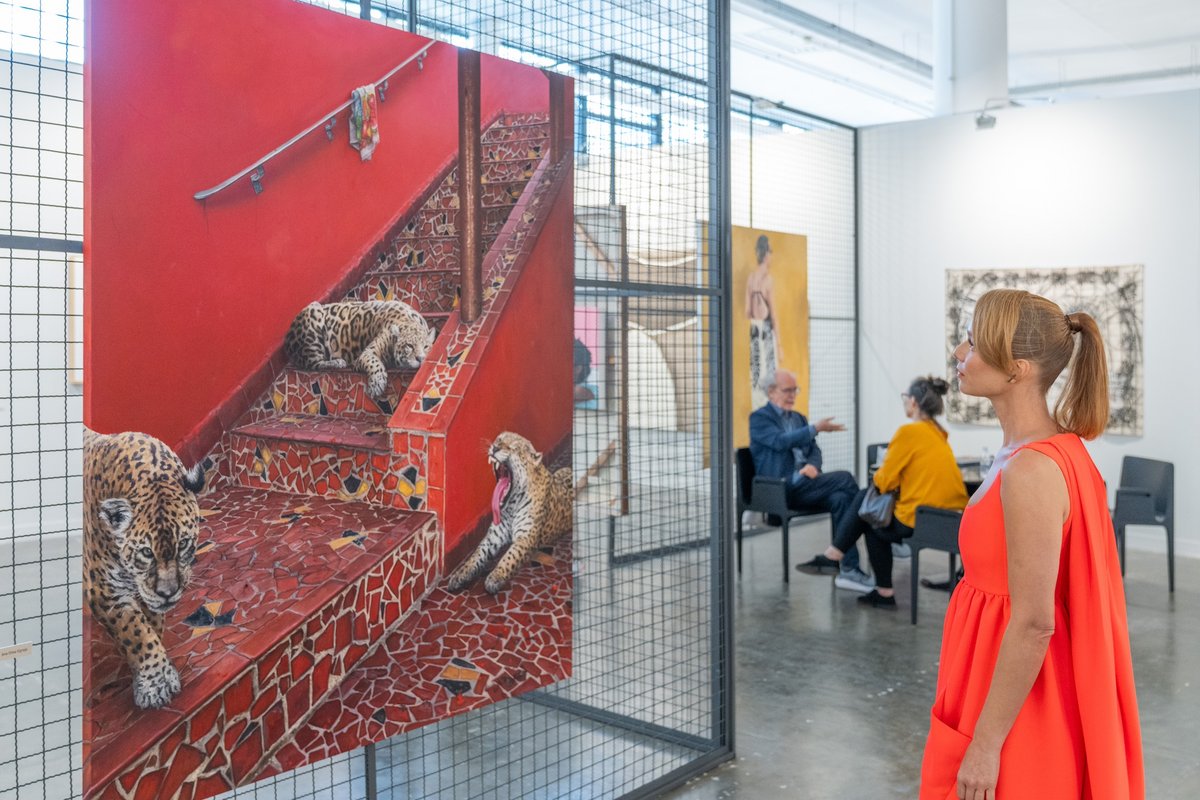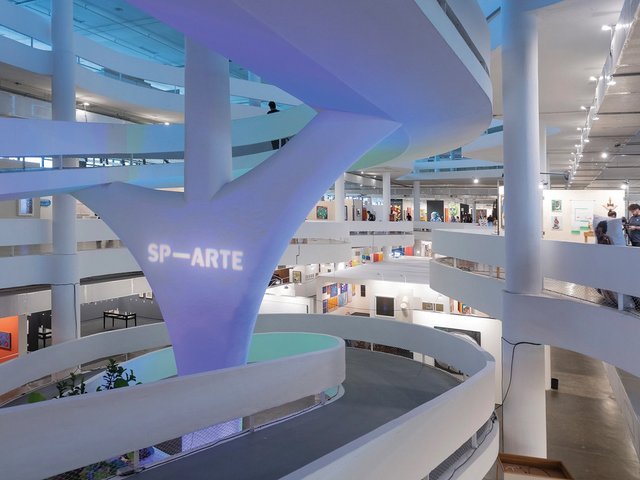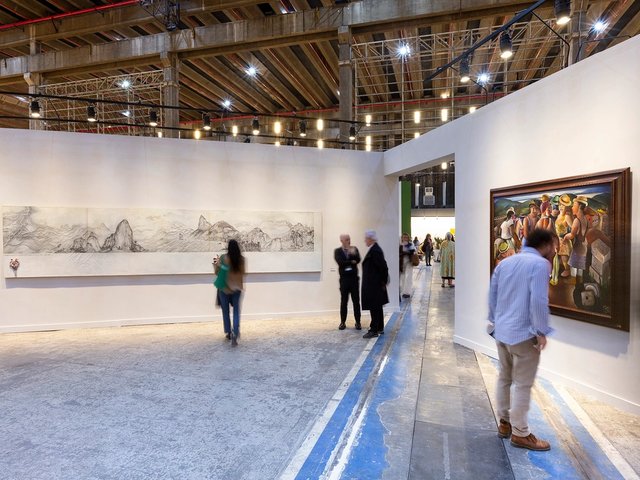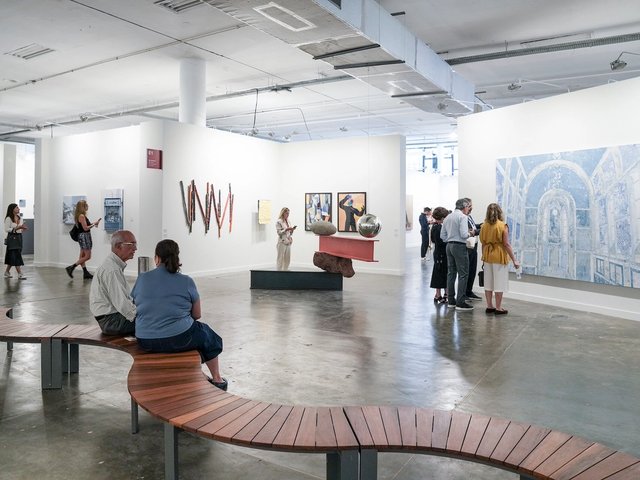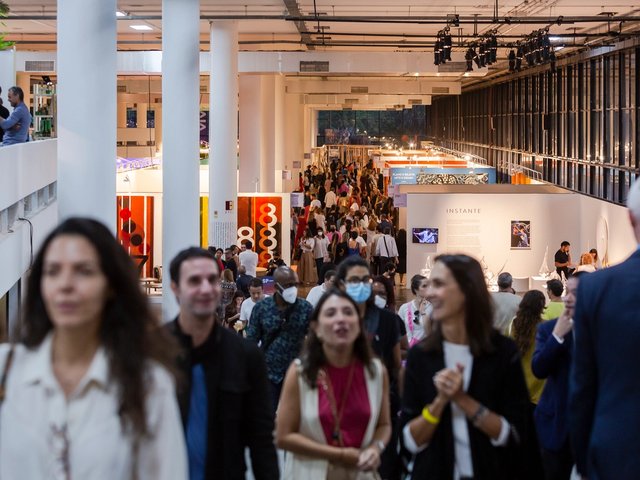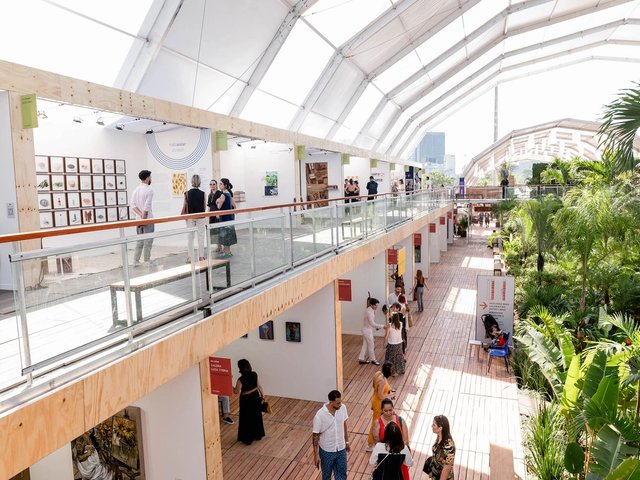The 20th edition of SP-Arte opened at the Bienal Pavilion in São Paulo’s Parque Ibirapuera on Wednesday (3 April), with more than 130 participating galleries that hail overwhelmingly from Latin America. That line-up of exhibitors represents a more than threefold increase from the fair’s inaugural edition, in 2005, when 40 galleries (almost all of them Brazilian) participated.
"SP-Arte is intertwined with the history of the formation of the contemporary [Brazilian] art market," Fernanda Feitosa, the fair’s founder, told journalists. More than 36,000 visitors are expected over the fair’s five-day run, according to organisers, more than double the number of attendees at the early editions.
"The fair has always had the same objective: to promote the careers of Brazilian artists and promote the insertion of young artists into the market," Feitosa tells The Art Newspaper.
The fair’s scope has also shifted over the past two decades, maintaining a national focus while also becoming a hub for the entire Latin American market. "SP-Arte is considered the reference and leader in all of Latin America as far as art fairs go, so for us it was very important to come with a significant presence," says Mariano Ugalde, owner of Salar Galería de Arte in La Paz, Bolivia, a first-time exhibitor at the fair.
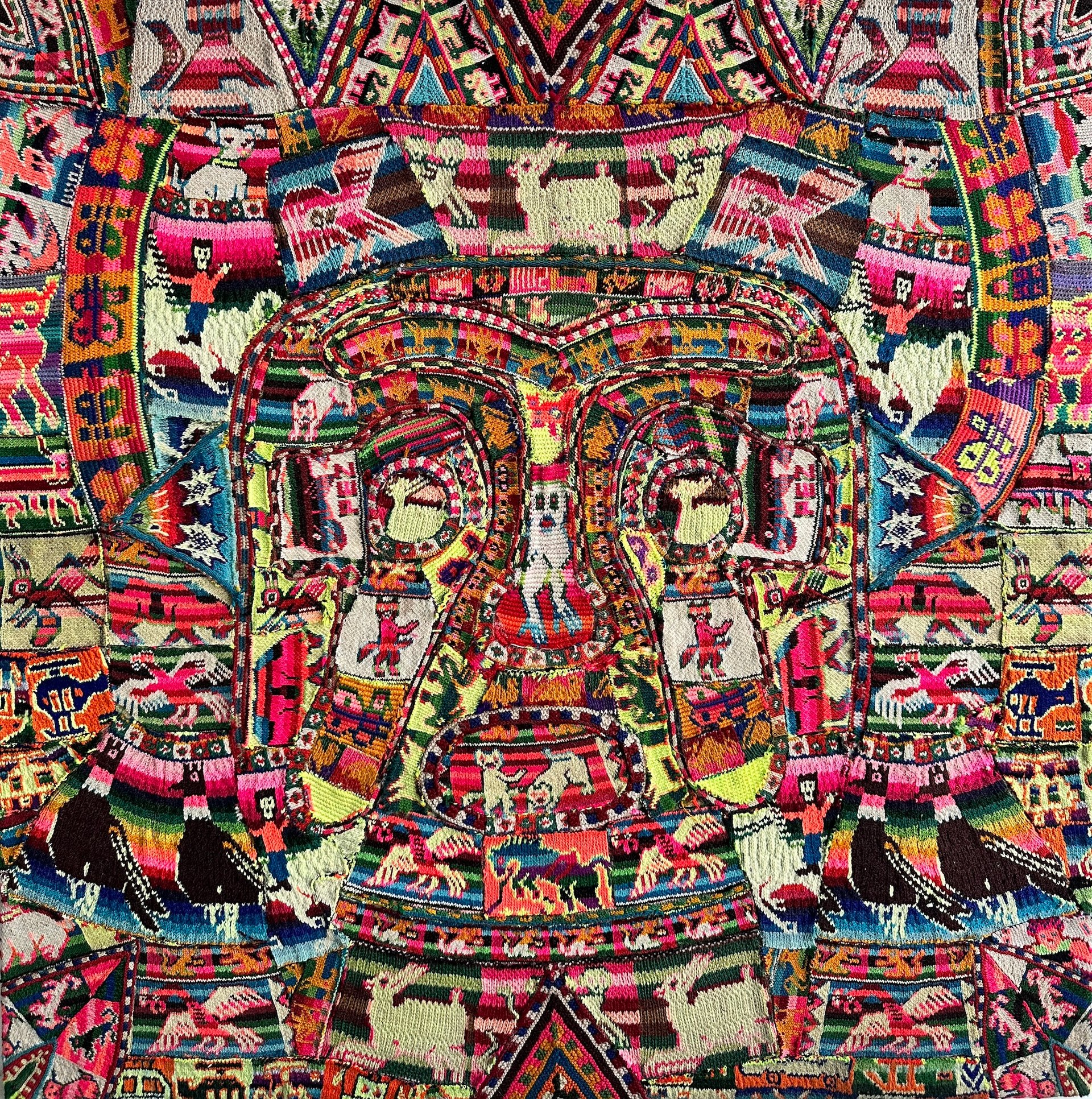
Gaston Ugalde, Untitled, 2020, Andean textile fragments collage Salar Gallery
Ugalde’s stand features works by four artists, including a selection of pieces by his father, Gaston Ugalde, one of Bolivia's most important contemporary artists. This is the first year a Bolivian gallery has participated in SP-Arte, Ugalde says, and the effort seems to be paying off—Ugalde says he made several sales during the fair’s opening day.
Another newcomer to the fair is Mexico City’s Galería RGR. “Brazil has two very important [artistic] currents. One is geometric deconstructivism and the other has to do with the disruption of this idea,” says Gabriela Rangel, RGR's artistic director. “We at RGR also work with these two currents. Our coming here is a dialogue with this context."
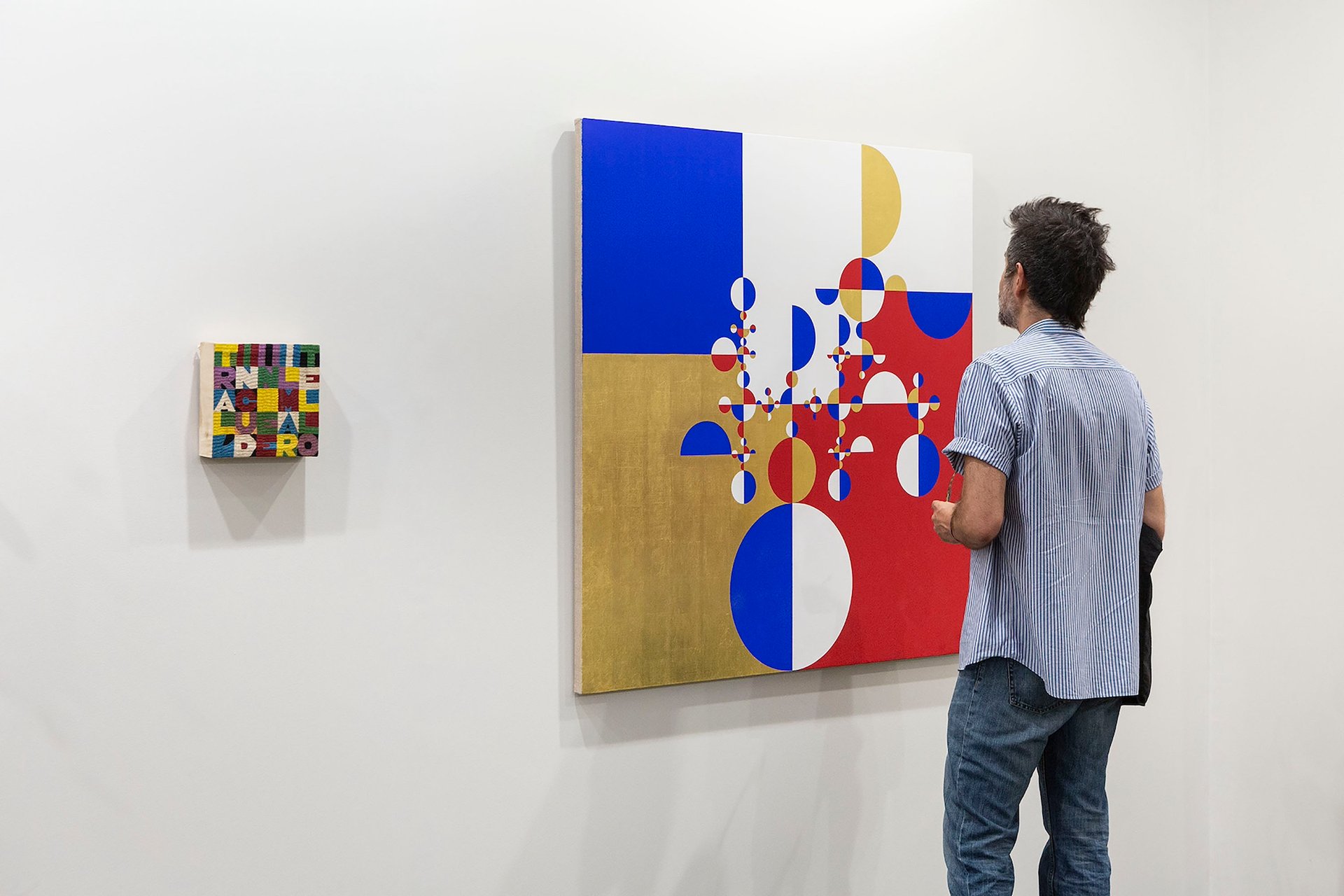
A visitor during the opening day of SP-Arte's 2024 edition SP-Arte/Divulgação
The gallery's owner, Ricardo Gonzales Ramos, concurs. “Mexico and Brazil are the biggest art markets in Latin America and this fair is historically very important,” he says. For the RGR’s first outing at SP-Arte, Ramos and Rangel brought works by Ding Yi, a leading figure in Chinese geometric abstraction. According to Rangel, this is the first time Ding’s work has been exhibited in South America.
For fair’s organisers, the increase in participation from Latin American galleries in recent editions has been a pleasant surprise. “When I started doing the fair, I thought it would naturally attract Latin American galleries,” Feitosa says. “To my surprise, the first editions actually attracted European and US galleries, because the size of the Brazilian market is very large. Now, 20 years later, we have a stronger Latin presence than a Northern Hemisphere presence.” Of the 14 international galleries at this year's SP-Arte, eight are from Latin America.
For Ana Patricia Gomez, the owner of Bogotá-based La Balsa Arte gallery, the fair is a distinctly Brazilian event—to a fault. “We think that the fair’s mindset is very Brazilian and very local, which is understandable because Brazil is such a huge country with such a rich culture, but nonetheless we would love to see more international buyers as well as North American and European galleries," Gomez says.
A decade ago, major galleries from the US, UK and Europe like David Zwirner and White Cube were regular participants. But as the country's economy slowed and participation became more bureaucratically complicated, they stopped coming.
For Feitosa, the fair’s more regional and even national flavour is also partly explained by shifts in collector behaviour spurred by pandemic. “Before the pandemic, there was a great thirst for travel, with people interested in discovering new cultural centres, so we had a large wave of international visits,” she says. “Today new centres of interest are emerging, such as in Asia. There’s now a desire to travel to nearby cultural poles, to nearby locations.”
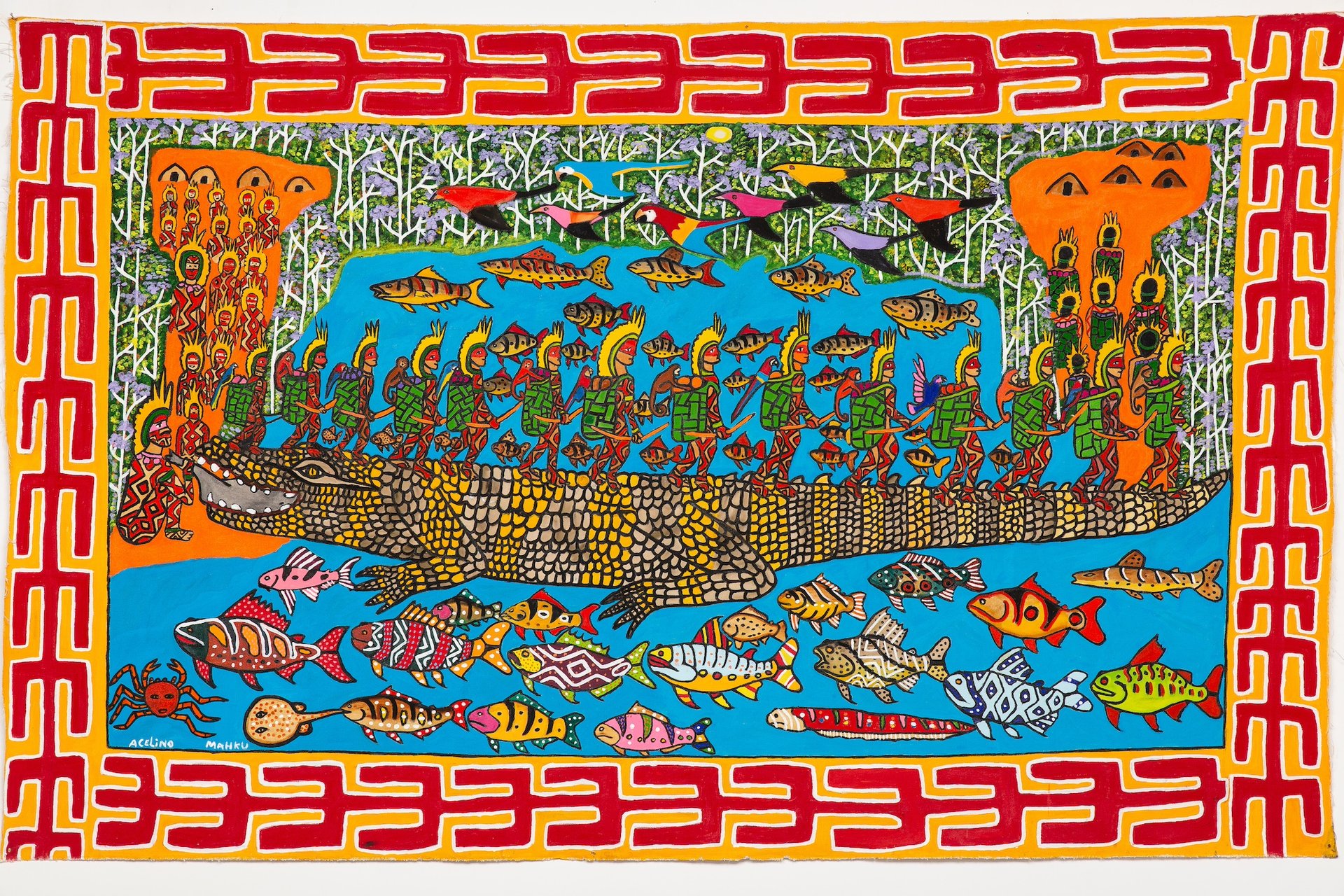
Acelino Sales, Kapewe Pukenibu, 2024 Carmo Johnson Projects
As the share of Brazilian galleries participating in the fair has grown, the range of Brazilian artists they are showing has also become broader and more diverse. In its third year showing at SP-Arte, the itinerant Brazilian gallery Carmo Johnson Projects has opted to show the works of only Indigenous artists, including several works by members of Makhu (the Huni Kuin Artists Movement), Indigenous artists who live in the Amazon region. Makru artists are currently painting a 750 sq. m mural on the exterior of the main pavilion at the Venice Biennale as part of the central exhibition there, which is being organised for the first time this year by a Brazilian curator, Adriano Pedrosa, the artistic director of the São Paulo Museum of Art (Masp).
“The Venice Biennale presents us with an important window and an important opportunity,” says Luan Lima, the gallery's assistant director. “There are a lot of people who might not come to the gallery, but who come here, who are interested and who want to know more."
The fair’s representation of Brazilian art has also evolved, Lima says, since Carmo Johnson Projects first participated in 2021. “It became more diverse and followed the changes seen in the Brazilian art scene. It’s a synthesis of what is happening in Brazil in terms of art.”
- SP-Arte, until 7 April, Bienal Pavilion, Parque Ibirapuera, São Paulo


